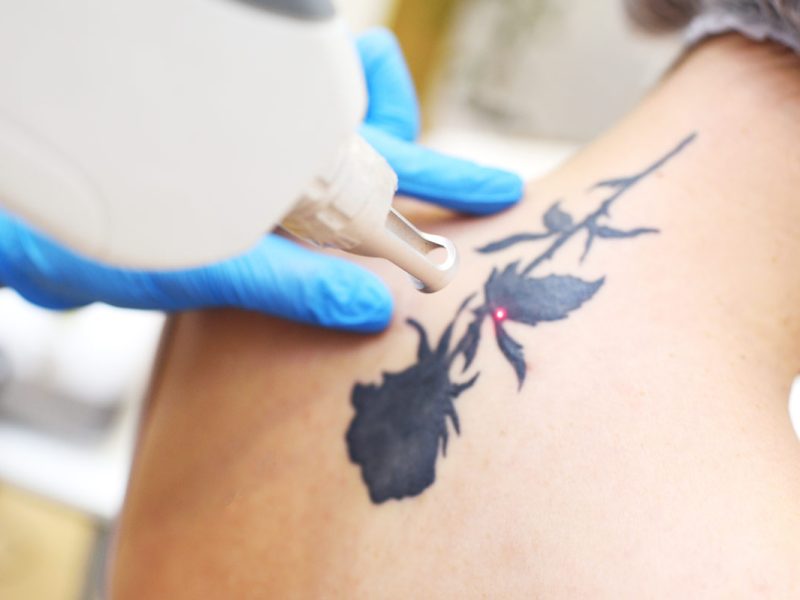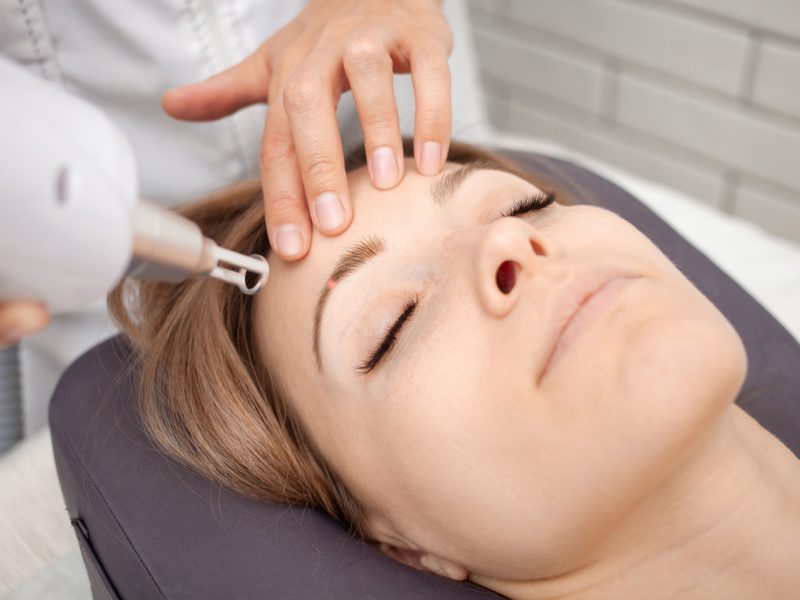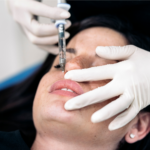- Jawline Treatment with Hyaluronic Acid
- Chin Augmentation for Harmonious Facial Features
- Lip Augmentation
- The Russian Lips (Doll-Lips) Technique with Hyaluronic Acid
- Effective Non-Surgical Rhinoplasty: Hyaluronic Acid Application
- Hyaluronic Acid Injection for Nasolabial Folds
- Remove Dark Circles, Tear Troughs & Eye Bags
- Cheek Augmentation – Cheekbone Injections

Inhalt des Beitrags
Tattoo Removal: Costs and Everything You Need to Know
If you’re considering getting a tattoo removed, you’re probably interested in the costs involved. Tattoo removal, especially by laser, is a topic that concerns many. Here’s what you can expect financially and regarding the procedure.
What determines the cost of tattoo removal?
The cost of removing a tattoo can vary greatly. The factors influencing the price are:
- Tattoo size: The larger the tattoo, the more area the laser needs to treat, leading to higher costs.
- Tattoo color: Dark colors like black and dark blue are easier to remove and generally cost less. Light colors like yellow and pastels require more sessions, which increases the cost.
- Tattoo age: Older tattoos fade over time and are often easier to remove than newer tattoos.
- Tattoo location: Tattoos on sensitive or hard-to-reach areas can be more expensive as they require more care and time.
How much it really costs to get a tattoo removed
The costs for tattoo removal are quoted per session and typically range between 80 and 400 Euros. This depends on the factors mentioned above. Keep in mind that you will usually need multiple sessions to completely remove a tattoo.
Number of sessions needed
The number of sessions required to remove a tattoo depends on various factors, such as the depth of the ink and the colors used. Generally, 2 to 10 sessions are necessary. It’s important to allow enough time between sessions for the skin to heal, which usually means about 6 to 8 weeks.
What is the laser tattoo removal process?
Laser tattoo removal is a process that uses laser light to break down the ink under the skin. The body then naturally removes these smaller ink particles. The process is:
- Preparation: The skin is cleaned and prepared.
- Treatment: A laser device is used to direct light pulses at the tattoo.
- Aftercare: You will receive instructions for caring for the treated area at home.
Are there any risks?
As with any medical procedure, there are risks associated with tattoo removal. The most common include pain during treatment, redness, swelling, and in rare cases, scarring. Aesthetiqua, as an experienced provider, ensures these risks are minimized.
“The cost of getting a tattoo removed is usually higher than getting one. It can cost three to four times as much, depending on the complexity and colors used. I recommend only using Pico Laser treatment, as it works more precisely and effectively. It breaks down ink particles more thoroughly and quickly, which reduces the number of necessary sessions and puts less strain on the skin.”

ARZT BJÖRN FREY
Doctor
FAQ
Frequently Asked Questions about the Cost of Tattoo Removal
How much does it cost to laser off a tattoo?
The exact costs can only be determined after an assessment and consultation with one of our doctors.
They typically range between 80 and 400 Euros per session.
When does health insurance cover tattoo removal?
The costs for tattoo removal are usually not covered by health insurance, as it is mostly a private service.
Health insurance coverage only occurs in exceptional cases, if the removal is medically necessary and thus considered a medical treatment.
How many laser sessions until a tattoo is gone?
The number of laser treatments needed to completely remove a tattoo varies depending on various factors such as size, color, ink depth, and tattoo age.
On average, most people need between 5 and 10 sessions.
Between sessions, a healing period of about 6 to 8 weeks should be allowed to give the skin enough time to regenerate.
How much does laser tattoo removal hurt?
The pain sensation during laser tattoo removal varies from person to person, but is often compared to the feeling of hot grease splatters hitting the skin or a rubber band snapping against the skin.
Many report that it is more painful than getting the tattoo itself. Pain-relieving
measures such as local anesthetic creams or cold applications can be used before treatment to minimize pain.
Which tattoo removal is the best?
The most effective and common method for tattoo removal is laser therapy, especially with the Pico-laser.
This technology is considered particularly effective because it uses fast and precise light pulses that efficiently break down ink particles, thereby removing the tattoo faster and more thoroughly.
The Pico-laser is particularly advantageous for removing colored tattoos and those that sit deeper in the skin.
24
Apr

ARZT BJÖRN FREY






 Lip Augmentation
Lip Augmentation The Russian Lips (Doll-Lips) Technique
The Russian Lips (Doll-Lips) Technique Effective Non-Surgical Rhinoplasty
Effective Non-Surgical Rhinoplasty Cheek Augmentation – Cheekbone Injections
Cheek Augmentation – Cheekbone Injections Remove Dark Circles, Tear Troughs & Eye Bags
Remove Dark Circles, Tear Troughs & Eye Bags Chin Augmentation
Chin Augmentation Jawline Treatment
Jawline Treatment Nasolabial Folds
Nasolabial Folds Remove Forehead Wrinkles
Remove Forehead Wrinkles Remove Frown Lines
Remove Frown Lines Remove Crow’s Feet
Remove Crow’s Feet Reduce Neck Wrinkles
Reduce Neck Wrinkles Lip Flip with Botox®
Lip Flip with Botox® Remove Bunny Lines
Remove Bunny Lines Botox® Treatment against Sweating
Botox® Treatment against Sweating Botox® for Teeth Grinding
Botox® for Teeth Grinding Tattoo Removal with Laser
Tattoo Removal with Laser Remove Permanent Makeup
Remove Permanent Makeup Permanent Laser Hair Removal
Permanent Laser Hair Removal Fat-Away Injection
Fat-Away Injection Hylase | Dissolve Hyaluronic Acid
Hylase | Dissolve Hyaluronic Acid Polynucleotide Treatment | PhilArt
Polynucleotide Treatment | PhilArt